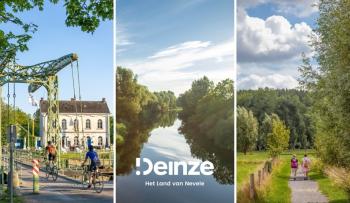
What are the health risks and benefits of cycling in times of COVID?
It has been well known for many years that cycling is one of the healthiest activities that we can do. During the medical pandemic even more, as bicycles have emerged as one of the safest means of moving around. However, some citizens still hesitate about the real risks of going out for a bike ride.
The evidence is overwhelming: cycling prevents 18,110 premature deaths per year in the EU, which has an economic impact higher than the total spending on public health in a country like Spain. Cycling contributes to healthier lives by helping to prevent a large number of severe diseases: diabetes, breast and colon cancer, osteoporosis, Alzheimer, depression… You can check out all the impacts of cycling on European healthcare expenditure in our Cycling Benefits Report.
Moving to cycling can help combat transmission of COVID19 and also improve our effectiveness against any possible infections. Air pollution has been shown to be a carrier of the Coronavirus which may increase the exposure over a wider area, and patients with severe Covid-19 are twice as likely to have had pre-existing respiratory diseases as a result of air pollution, shifting away from motorised transport to a non-emission mode of transport like cycling can counteract these effects. A higher BMI has also been shown to be an indicator of whether an infected person will go on to have a severe reaction to the virus or not, and cycling has been shown to regulate and reduce BMI individually and across a population.
There has been some research that claims that exposure to the virus increases while cycling, running, or walking outside, in particular research from a Dutch/Belgian engineers seem to suggest that we can contract coronavirus from a fellow pedestrian, runner, or cyclist who happens to exhale as they pass by. They conclude that we should stand 5 metres behind a cyclist and 20 meters behind a cyclist that is cycling hard! However, this was written by engineers in a wind tunnel using squirted droplets from an aerosol, so we really need to unpack all of this to see how this represents effects in the real world.
The study, first of all, did not look at the transmissibility of the virus in droplets or aerosols, they simply concluded that any exposure to the virus means that we will be infected. This is not the case. Sunlight, temperature, wind, rain, and humidity can all affect virus infectivity and transmissibility, and though breathing in droplets in compact spaces are a genuine risk the risk from transmission in open outdoor space is assumed to be low. Likewise, we have to take in a certain number of virus particles in order to kickstart an infection, the Belgian/Dutch study assumed that any exposure equals infection whereas in reality, it takes a thousand or so virus particles in the body to set off an infection.
Again, this is unlikely outdoors in open space with more than a metre and a half distance. In China, a preprint study of 318 outbreaks found that transmission occurred outdoors in only one of them, and a Japanese preprint study concluded that “the odds that a primary case transmitted Covid-19 in a closed environment was 18.7 times greater compared to an open-air environment”.
This is not to say that travelling outside is completely without risk, but we can conclude that travelling in the open air rather than on public transport will mean less opportunity for transmission and infection. Some might argue that single-use car then will be a lower risk for infection, but as we have seen air pollution and sedentary lifestyle can accelerate transmissibility and increase the possibility of critical effects of the virus. So the private car makes the fight against the virus more difficult.
Cycling and walking are the only two safe options at both the individual level to keep us healthy and protected against COVID19, but also at the public level to improve public health, get people to their destinations and solve many of the problems that we have without access to public transport. A shift to cycling will continue the current levels of cleaner air, improve the general health of the population and therefore improving the resistance to critical reactions to the virus. And of course, increased cycling will also help solve the usual suspects of urban mobility problems like congestion, CO2 emissions, and creating liveable environments for all European citizens.
Regions:
Topics:
Contact the author
Recent news!
Contact Us
Avenue des Arts, 7-8
Postal address: Rue de la Charité, 22
1210 Brussels, Belgium









